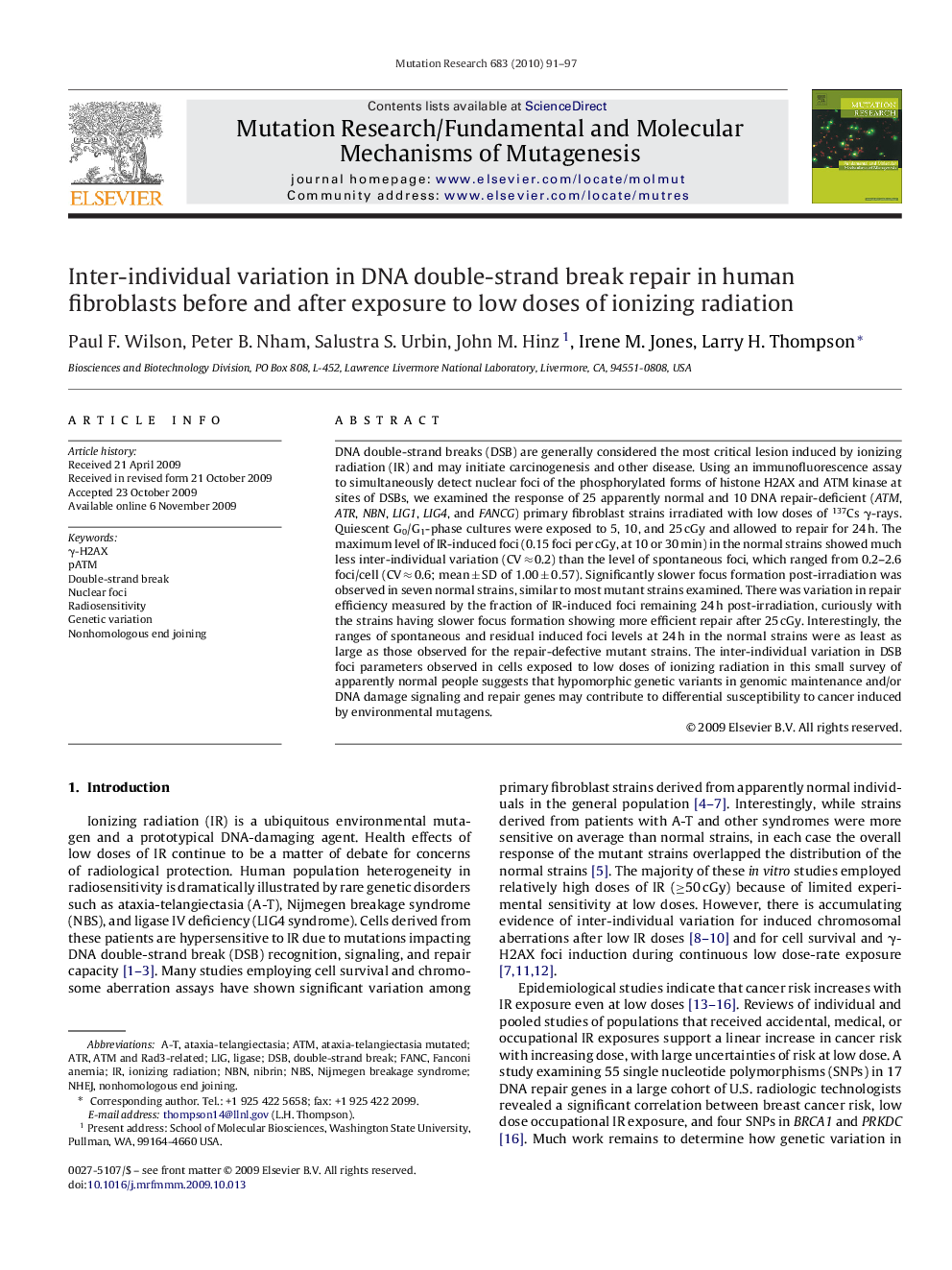| Article ID | Journal | Published Year | Pages | File Type |
|---|---|---|---|---|
| 2146796 | Mutation Research/Fundamental and Molecular Mechanisms of Mutagenesis | 2010 | 7 Pages |
DNA double-strand breaks (DSB) are generally considered the most critical lesion induced by ionizing radiation (IR) and may initiate carcinogenesis and other disease. Using an immunofluorescence assay to simultaneously detect nuclear foci of the phosphorylated forms of histone H2AX and ATM kinase at sites of DSBs, we examined the response of 25 apparently normal and 10 DNA repair-deficient (ATM, ATR, NBN, LIG1, LIG4, and FANCG) primary fibroblast strains irradiated with low doses of 137Cs γ-rays. Quiescent G0/G1-phase cultures were exposed to 5, 10, and 25 cGy and allowed to repair for 24 h. The maximum level of IR-induced foci (0.15 foci per cGy, at 10 or 30 min) in the normal strains showed much less inter-individual variation (CV ≈ 0.2) than the level of spontaneous foci, which ranged from 0.2–2.6 foci/cell (CV ≈ 0.6; mean ± SD of 1.00 ± 0.57). Significantly slower focus formation post-irradiation was observed in seven normal strains, similar to most mutant strains examined. There was variation in repair efficiency measured by the fraction of IR-induced foci remaining 24 h post-irradiation, curiously with the strains having slower focus formation showing more efficient repair after 25 cGy. Interestingly, the ranges of spontaneous and residual induced foci levels at 24 h in the normal strains were as least as large as those observed for the repair-defective mutant strains. The inter-individual variation in DSB foci parameters observed in cells exposed to low doses of ionizing radiation in this small survey of apparently normal people suggests that hypomorphic genetic variants in genomic maintenance and/or DNA damage signaling and repair genes may contribute to differential susceptibility to cancer induced by environmental mutagens.
